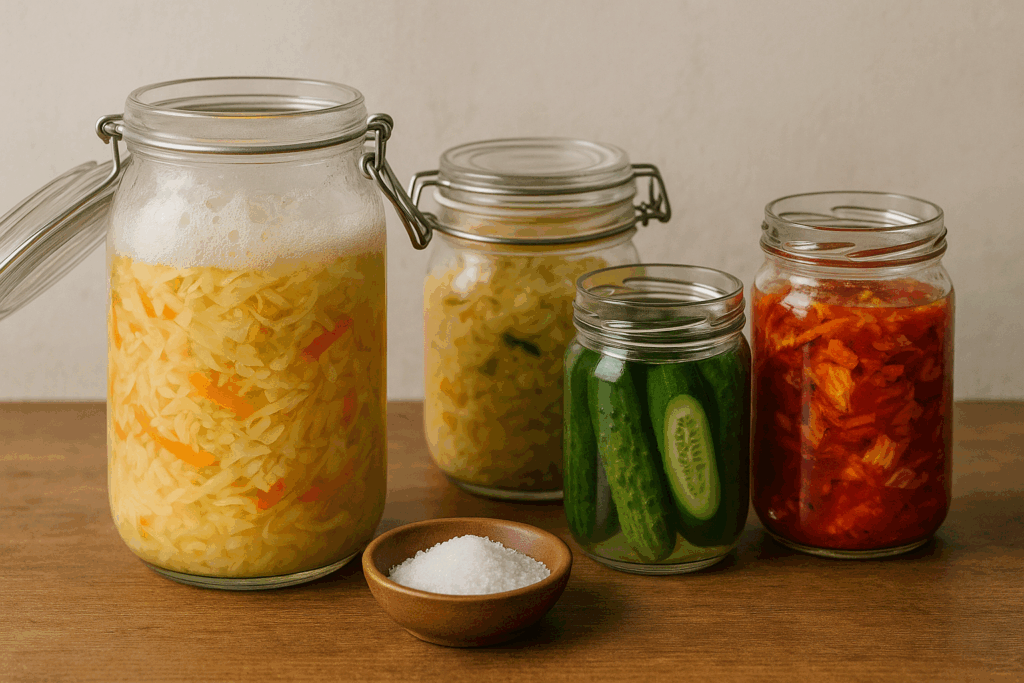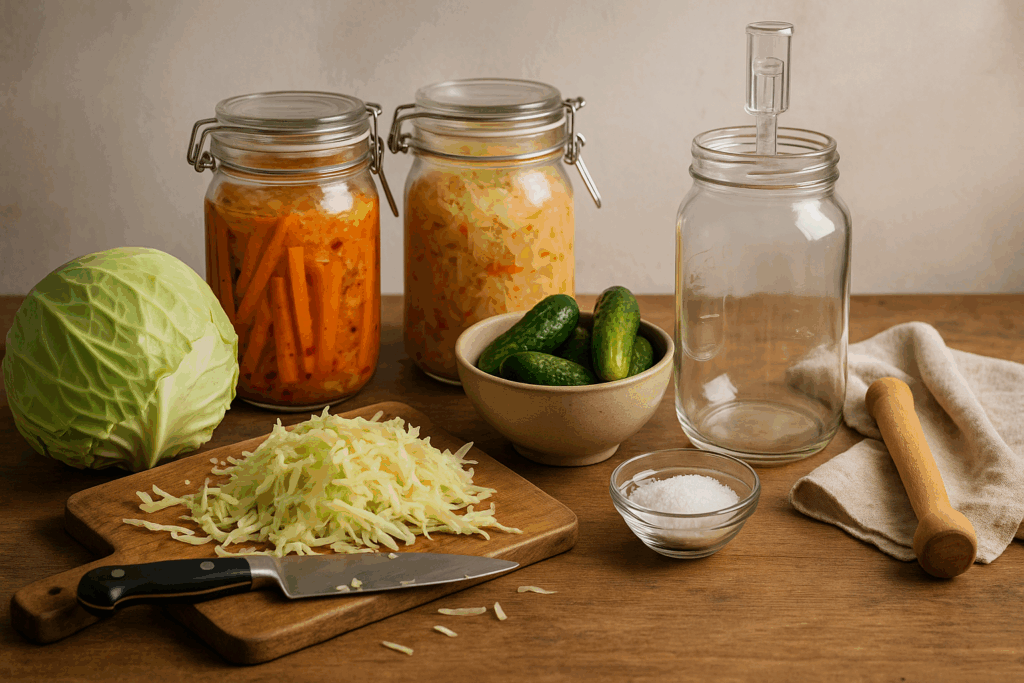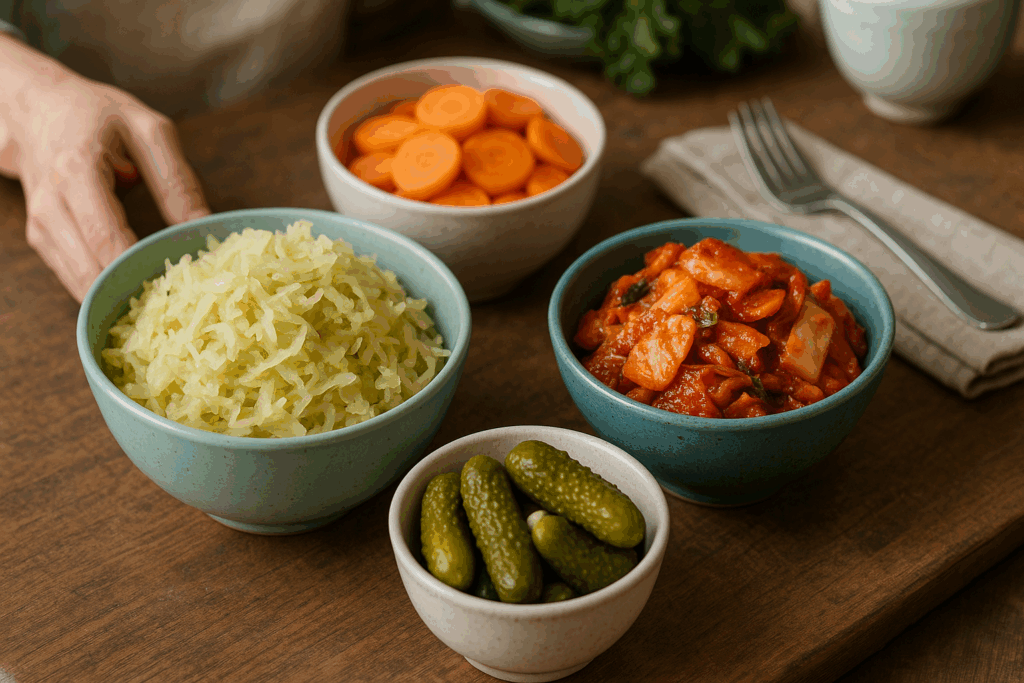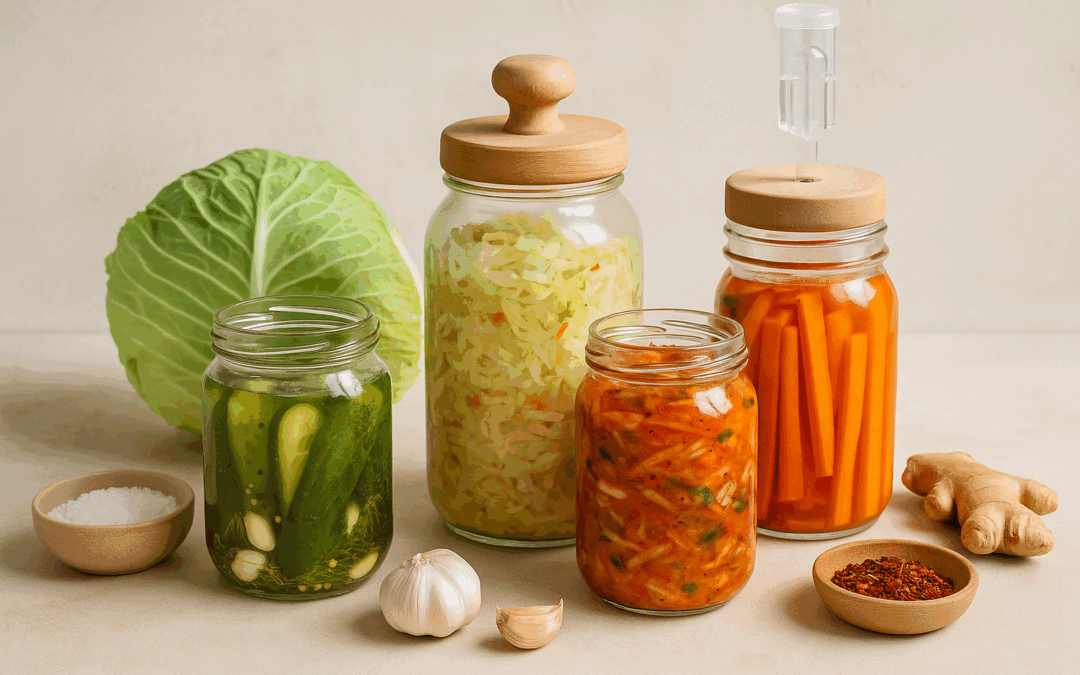Fermentation isn’t just trendy—it’s delicious, nutritious, and surprisingly easy to do at home. This guide breaks down the basics of lacto-fermentation, how to safely make your own sauerkraut, kimchi, pickles, and more, plus the gut health benefits and tools you’ll need to get started.
What Is Lacto-Fermentation?

At its core, lacto-fermentation is a natural process that uses salt and time to transform raw vegetables into tangy, probiotic-rich staples. When submerged in a salty brine, good bacteria—primarily Lactobacillus—convert sugars in the vegetables into lactic acid, which preserves the food and enhances its flavor. This method has been used for thousands of years across cultures to preserve harvests and create signature dishes like Korean kimchi and German sauerkraut.
The process doesn’t require fancy equipment, refrigeration, or even cooking. As long as the vegetables stay submerged and the environment is clean, fermentation does the rest. It’s science, tradition, and flavor all in one.
Getting Started: Recipes and Tools for Beginners

Making your own fermented vegetables is surprisingly low-effort. All you need is fresh produce, non-iodized salt, a clean jar, and some patience. For sauerkraut, shred cabbage, massage it with salt, pack it tightly into a jar, and wait. Kimchi involves a few more ingredients—like garlic, ginger, chili flakes, and fish sauce—but follows a similar brining and waiting process. Cucumbers become pickles in a saltwater bath with garlic and dill, while carrots and beets can also take on new life when fermented.
As for tools, a wide-mouth mason jar with a weight to keep the vegetables submerged, plus a fermentation lid or loosely fitted cap to allow gases to escape, is all you really need. Optional items like fermentation crocks or airlock lids can make things easier but aren’t essential.
Why Fermentation Is Great for Your Gut

Fermented foods are more than flavorful—they’re functional. Lacto-fermented vegetables are packed with live probiotics, beneficial bacteria that support a healthy gut microbiome. These good bacteria can improve digestion, reduce inflammation, and even support immune function. The fermentation process also makes nutrients more bioavailable, meaning your body can absorb more vitamins and minerals from the same food.
Best of all, you control what goes in. Unlike many store-bought versions, home ferments are free from preservatives, excess sugars, and pasteurization, meaning you get maximum benefits. It’s a DIY project that’s good for your body—and your budget.

